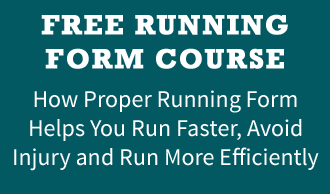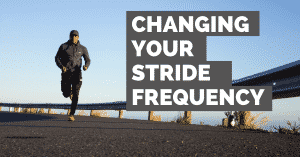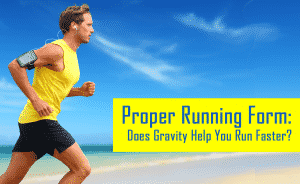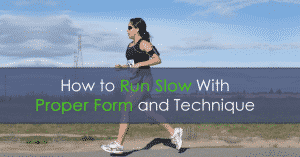Believe it or not, you have been running almost as long as you have been walking.
Unlike swimming or dribbling a basketball, nobody really needed to teach you how to run. To some extent, running (and walking) is pre-programmed into our nervous system from birth.
Despite how naturally running comes to us, there is still a lot to learn about how to become a faster and more efficient runner by looking at some of the fundamental aspects of human gait.
So, in this article, we’re going to look at these biomechanical aspects and help you determine which biomechanical error is holding you back.
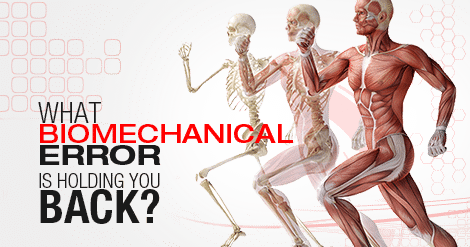
Biomechanics and running
There is an overwhelming body of knowledge on the biomechanics of running, which can make it difficult to know what to trust. The best way to get a broad picture of what conclusions there are about running biomechanics is to look to a review paper.
One of the most authoritative review to date was published in 1998 by Tom Novacheck, a pediatric orthopedist and gait specialist at Gillette Children’s Hospital in Minnesota.
His aptly-titled paper, “The Biomechanics of Running,” has been cited over five hundred times, indicating that it’s a pretty good resource.
The basic question we’d like to answer is: “how do biomechanics change when we compare slow versus fast running?”
Fortunately, Novacheck’s paper covers this in great detail.
Running stride
By looking at the electrical signals in the muscles at different stages of one’s running stride, it is clear that different muscle groups have different tasks to accomplish.
The muscle active for the longest proportion of the running stride is the tibialis anterior, otherwise known as your shin muscle.
While your leg is in the air, the tibialis anterior dorsiflexes the ankle to prepare for landing, and during impact, it prevents your foot from slapping the ground too hard. But it would be a mistake to conclude that the shin muscle is the most important muscle because of how much you use it.
In fact, the greatest demands are probably placed on the hip extensor muscles, such as the gluteus maximus, which “kick back” your leg.
This is the muscle group that is active for the shortest period of the stride. Its importance lies in the fact that the hip extensors have a limited time to complete their job, which requires a lot of muscle strength and power.
The hip extensors also control a much larger portion of your leg than the smaller muscles like the tibialis anterior, meaning they have to do a lot more work for each step you take.
Additionally, as your speed increases from a walk to a slow run, and then to a fast run, the relative proportion of your energy that comes from your hip extensors increases as well. While walking, only seven percent of the energy used to propel you forward comes from your hip extensors. When you run slowly, this increases to 14%, and when you run fast, this share increases to 24%.
By increasing the strength and especially the power of the hip extensors, your ability to run at fast speeds should improve.
A strength routine that focuses on hips and glutes, such as squats, lunges, or bounding exercises are a great way to accomplish this, and hill repeats should help too.
Joint angles
Another method for examining the running stride is looking at joint angles.
Intuitively, you know that running faster means your joints are working through a broader range of motion, and biomechanical research confirms this.
When running at a slow speed, your knee angle during the “swing” phase of the running stride is only about 80 degrees. As you increase your speed, this angle increases as well.
Faster speeds push the angle of the knee beyond 90 degrees, and all-out sprinting can increase it to over 130 degrees. Hip flexion increases as well: slower speeds result in hip flexion of about 60 degrees, while sprinting pushes this up to over 90 degrees.
Most runners already have pretty good hip and quadriceps flexibility, but if this is a weakness for you, it might be holding you back from running faster.
Stretching out your quads and your hips, in addition to using a foam roller and doing some hip mobility exercises, can ensure that your range of motion is not going to be a limiting factor in your training.
Timing
A third way to look at mechanics is to consider timing. As you increase your speed, the amount of time you spend on the ground decreases.
Additionally, the percentage of your stride that’s spent on the ground decreases as well. When walking, each foot spends 62% of its time on the ground. At a slow run, this drops sharply to 39%.
At a faster run, this decreases again to 37% for most people. The foot of an elite sprinter spends only 22% of its time on the ground!
Despite this decrease in time spent on the ground, the amount of work done by the ankles increases proportionally with your running speed. This means your ankle power—the amount of energy exerted over a certain amount of time—drastically increases.
To make sure that a lack of ankle power doesn’t inhibit your ability to run fast, you can do plyometric exercises like ankle hops and skipping, and add hill repeats to your training regimen.
Conclusion
By looking at out how our bodies generate more power as we increase our running speed, we can identify specific parts of the running stride which play a major role in enabling faster running. Three pieces stand out: hip strength & power, hip and quadriceps range of motion, and ankle power.
- Running-specific strength exercises like squats, lunges, and bounding can increase hip power, while ankle power can be increased by doing hops and skipping.
- Uphill running, which puts a great demand on all of the major muscle groups of your legs, is a fantastic way to improve both hip and ankle power.
- Quad and hip range of motion can be addressed with hip mobility exercises, stretching, and foam rolling.
Take care of these three aspects of your stride, and you’ll be well on your way to getting faster.
Have you ever taken the time to look into your biomechanics for improving your performance? What area of your body would you consider your weakness?



